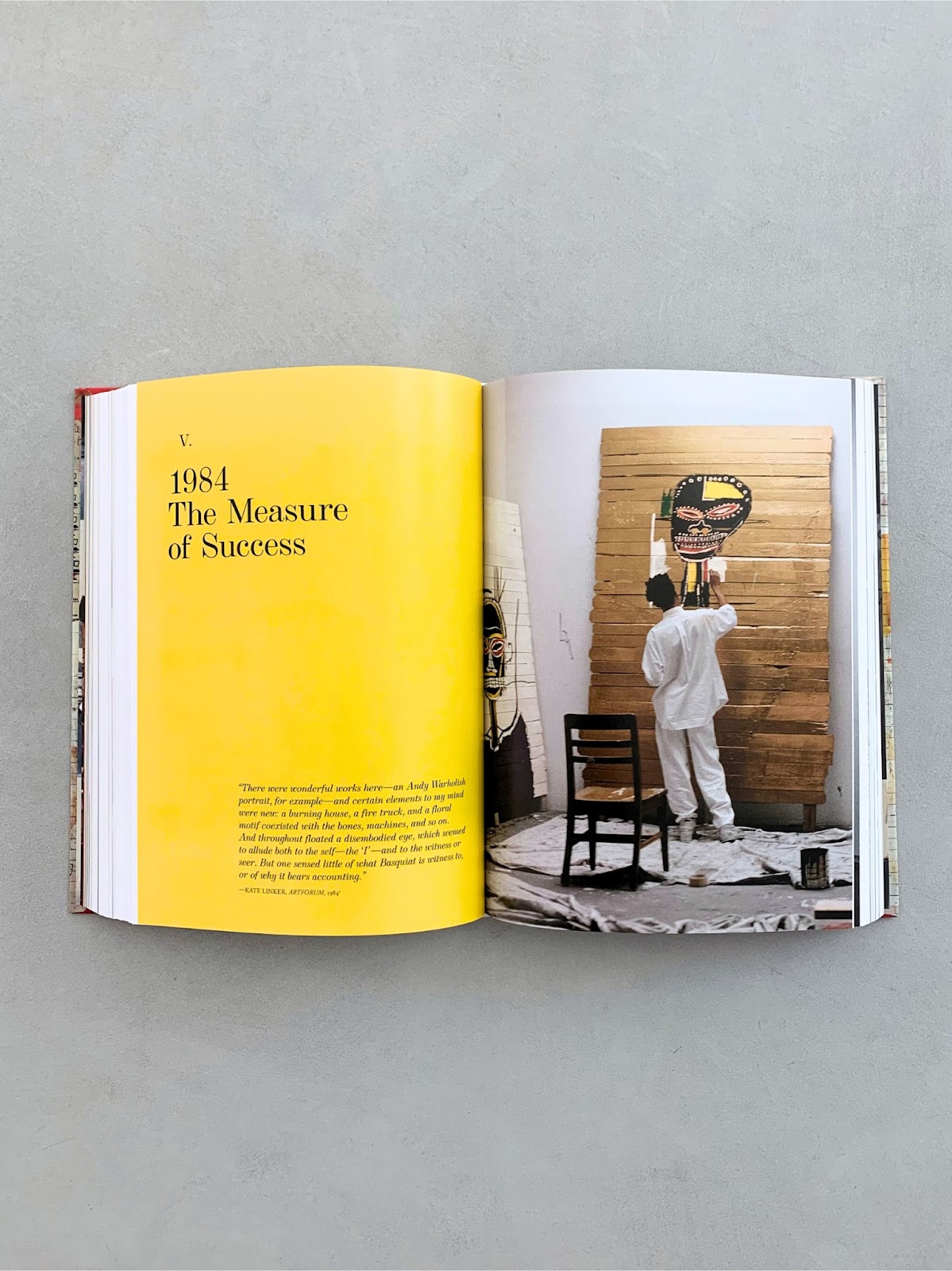This richly illustrated volume delves into Basquiat’s gift for visual storytelling, showcasing how his paintings, drawings, and handwritten notes weave a vivid narrative of his era, identity, and the world that shaped him.
From the very first pages, the book immerses the reader in Basquiat’s early creative universe: his notebooks, scrap papers, and downtown graffiti tags, where language, anatomy, and raw symbolism converge. Even in his teenage years in Brooklyn, his instinct to layer meaning through fragmented text and image was already present. The 40th Edition presents high-resolution reproductions of major canvases, allowing close reading of each brushstroke, each crown, each cryptic phrase, elements that transformed the street into a living, speaking archive.
“I don’t think about art when I’m working. I try to think about life.”

As the book progresses, it draws attention to Basquiat’s habit of embedding historical names, racial slurs, and personal codes within his compositions. These acts of inscription (crossed out, repeated, shouted) become strategies of reclaiming power, of writing oneself into a history from which Black voices had often been excluded.
His use of color is almost percussive: bright reds, yellows, blacks that feel like jazz riffs or shouted slogans, layering not just aesthetics, but politics.

The essays featured in this edition offer critical insight into the socio-political context of 1980s New York. The rise of the downtown art scene, the AIDS crisis, police brutality, and cultural appropriation all serve as backdrops to Basquiat’s relentless production.
A section dedicated to his partnership with Andy Warhol explores both their collaborative dynamic and the deeper tensions surrounding visibility, commodification, and race in the art market.

What makes this edition particularly powerful is its commitment to reading Basquiat not only as a painter, but as a storyteller. It invites the reader to decode the multiple registers embedded in each work, visual, textual, historical, personal.
2.png)
The artist’s spontaneous fusion of iconography, poetry, and political critique is presented not as chaos, but as deliberate construction: a voice asserting itself through layers.
Rather than rehashing the myth of the tortured genius, this 40th Anniversary edition affirms Basquiat’s enduring relevance as an artist who knew how to turn canvas into chronicle, paint into pulse, and the fragmented city into an epic worth telling.